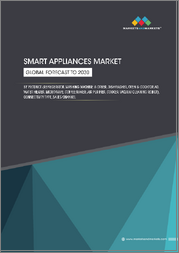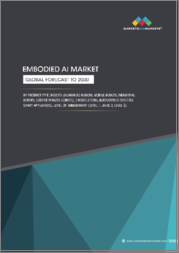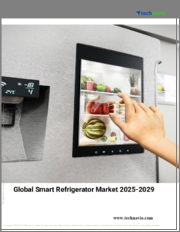
|
시장보고서
상품코드
1808257
스마트 가전 시장 : 가전 유형, 기술, 커넥티비티, 에너지원, 최종사용자, 유통 채널별 - 세계 예측(2025-2030년)Smart Appliances Market by Appliance Type, Technology, Connectivity, Energy Source, End User, Distribution Channel - Global Forecast 2025-2030 |
||||||
스마트 가전 시장은 2024년에 581억 달러로 평가되었습니다. 2025년에 682억 1,000만 달러에 이르고, CAGR 17.72%로 성장하여 2030년에는 1,546억 5,000만 달러에 달할 것으로 예측됩니다.
| 주요 시장 통계 | |
|---|---|
| 기준 연도 : 2024년 | 581억 달러 |
| 추정 연도 : 2025년 | 682억 1,000만 달러 |
| 예측 연도 : 2030년 | 1,546억 5,000만 달러 |
| CAGR(%) | 17.72% |
에너지 효율과 스마트 리빙, 소비자 경험을 변화시키는 도구로서 스마트 가전 진화의 발판을 마련합니다.
연결성, 자동화, 데이터 분석의 급속한 통합은 가정용 및 상업용 기기에 새로운 시대를 가져왔으며, 일상적으로 사용되는 가전제품을 학습, 적응, 성능 최적화가 가능한 지능형 시스템으로 승화시켰습니다. 이 변화는 단순히 점진적인 것이 아니라, 최종 사용자가 건축 환경을 접하는 방식에 대한 패러다임의 전환을 의미합니다. 편의성과 개인화에 대한 기대가 높아짐에 따라 제조업체는 기본적인 조작 기능을 넘어선 고급 기능을 통합해야 할 필요성이 대두되고 있습니다. 그 결과, 스마트 가전을 둘러싼 생태계는 소프트웨어 개발자, 플랫폼 제공업체, 서비스 파트너까지 확장되었으며, 이 모든 것이 사용자 권한 부여를 중심으로 일관된 경험을 창출하기 위해 협력하고 있습니다.
융합과 혁신을 통해 스마트 가전 상황에 창조적 파괴의 상황을 가져오고, 매우 중요한 기술적, 소비자적 변화를 드러냅니다.
스마트 가전을 둘러싼 환경은 센서 기술과 머신러닝 알고리즘의 비약적인 발전으로 인해 기기가 실시간 데이터 스트림을 해석하고 이에 반응할 수 있게 되면서 근본적인 변화가 일어나고 있습니다. 하드웨어의 발전과 더불어 소비자의 취향은 원활한 음성 조작과 개인화된 인터랙션 패러다임으로 진화하고 있습니다. 그 결과, 기존의 독립형 가전제품의 개념은 냉장, 세탁, 조리, 공조 제어 기기 간의 상호 운용성이 최종 사용자에게 시너지 가치를 창출하는 네트워크화된 생태계로 대체되었습니다.
미국이 새로 부과한 관세가 2025년 시장 역학 및 혁신 도입, 공급망 안정성에 미치는 종합적인 영향을 살펴봅니다.
지난 1년 동안 수입 전자부품 및 완제품에 대한 새로운 관세가 부과되면서 스마트 가전 산업에 서비스를 제공하는 세계 공급망에 큰 압력을 가했습니다. 반도체 모듈, 센서, 지능형 제어 보드에 영향을 미치는 관세 분류로 인해 제조업체들은 조달 전략을 재검토하고 생산 공간을 재구성하게 되었습니다. 그 결과, 많은 거래처 상표 제품 제조업체들이 비용 변동과 물류 지연을 완화하기 위해 국내 조립 및 근해 제휴로 전환을 가속화하고 있습니다.
스마트 가전 생태계를 구성하는 다양한 가전제품 유형 기술과 사용자 시나리오를 밝히는 세분화 프레임워크 심층 분석
스마트 가전 영역은 여러 가지 렌즈를 통해 살펴봄으로써 미묘한 성장 궤적과 기회 영역을 파악할 수 있습니다. 첫 번째 렌즈는 가정용, 주방용, 퍼스널케어 기기 등 가전제품의 클래스별로 제품을 분류하는 것입니다. 가전제품은 에어컨, 커피 제조업체, 식기 세척기, 선풍기, 조명, 오븐, 냉장고, 진공 청소기, 세탁기 등이 서로 연결되어 있으며, 각기 다른 사용 패턴과 통합 요구 사항을 가지고 있습니다. 반면, 주방에 특화된 혁신은 레시피 안내와 원격 모니터링을 제공하는 믹서, 조리대, 전자 레인지, 토스터기 등을 대상으로 합니다. 한편, 퍼스널케어 가전제품은 웰빙에 대한 통찰력을 제공하고, 몸가짐과 위생 습관에 대한 자동 보정 기능을 제공하도록 진화하고 있습니다.
미국, 유럽, 중동/아프리카, 아시아태평양의 동향과 역학 분석 및 성장 기회 탐색
스마트 가전제품이 어떻게 채택되고, 규제되고, 수익화되는지는 지역적 뉘앙스가 크게 영향을 미칩니다. 북미와 남미에서는 성숙한 가전 시장과 적극적인 지속가능성 의무가 결합되어 에너지 효율이 높은 냉장고, 스마트 온도 조절기, 커넥티드 키친 스위트에 대한 수요가 증가하고 있습니다. 한편, 유럽, 중동 및 아프리카의 생태계 기업들은 데이터 보호 및 상호운용성 표준을 강조하는 다양한 규제의 테피스트리를 탐색하고 있으며, 제조업체들은 제품 포트폴리오를 해당 지역의 컴플라이언스 요구사항에 맞게 조정해야 하는 과제를 안고 있습니다. 동시에 아시아태평양 수요는 급속한 도시화, 중산층 증가, 스마트 시티 구상에 대한 정부의 강력한 인센티브에 의해 촉진되어 지자체 인프라와 원활하게 통합되는 차세대 어플라이언스를 위한 비옥한 토양을 형성하고 있습니다.
스마트 가전 시장의 혁신과 시장 경쟁을 가속화하는 업계 선두주자들과 그들의 전략적 움직임
업계 선두주자들은 전략적 기술 제휴, 표적형 인수, 강력한 R&&D 투자를 통해 경쟁의 경계를 재정의하고 있습니다. 주요 가전업체들은 자체 AI 엔진과 맞춤형 센서 제품군을 통합하여 예측적 에너지 관리 및 자동 유지보수 알림을 제공합니다. 동시에, 기술 기업들은 기존 가전 브랜드와 협력하여 고급 분석 및 클라우드 네이티브 아키텍처를 통합함으로써 제품 로드맵을 가속화하고 서비스 제공을 확대하고 있습니다.
혁신 투자 운영 우수성 및 전략적 파트너십을 통해 업계 리더를 이끌 수 있는 실행 가능한 제안으로 구성된 로드맵 구축
업계 리더들은 디바이스, 생태계, 써드파티 용도의 원활한 통합을 보장하기 위해 개방형 표준과 플랫폼의 상호운용성 개발을 우선시해야 합니다. 협업 프레임워크를 지원함으로써 조직은 파편화를 줄이고, 가치 실현 시간을 단축하며, 최종 사용자 만족도를 극대화할 수 있습니다. 동시에 모듈화된 하드웨어 설계와 확장 가능한 소프트웨어 아키텍처에 투자함으로써 신속한 기능 확장을 가능하게 하고, 기술 발전에 따른 노후화 위험을 줄일 수 있습니다.
1차 조사와 2차 조사의 데이터 수집 분석 방법과 검증 프로세스를 결합한 엄격한 조사 방법을 설명하여 완성도 높은 통찰력을 얻을 수 있습니다.
이 조사는 주요 이해관계자(디바이스 제조업체, 기술 제공업체, 채널 파트너, 최종 사용자 조직 등)를 대상으로 광범위한 1차 조사를 통해 시장의 우선순위와 새로운 요구사항에 대한 생생한 관점을 수집했습니다. 심층 인터뷰와 구조화된 설문조사를 통해 채용 촉진요인, 페인 포인트, 전략적 로드맵에 대한 질적 통찰력을 얻었습니다. 이러한 조사결과는 업계 신문, 규제당국 신고, 특허 데이터베이스를 포함한 종합적인 2차 조사와 삼각비교를 통해 기술 동향과 법제도를 검증하였습니다.
주요 조사 결과와 중요한 통찰력을 통합하여 스마트 가전 생태계의 미래 궤도를 형성하는 전략적 중요성을 밝힙니다.
인공지능, 첨단 센서, 유비쿼터스 연결의 융합으로 가전제품의 역할은 고립된 도구에서 일상 생활을 개선하는 능동적인 상황 인식 에이전트로 재정의되고 있습니다. 지역적 차이, 관세에 대한 고려, 소비자 선호도의 변화로 인해 이해관계자들은 세계 베스트 프랙티스와 현지 시장 역학에 대응할 수 있는 적응형 전략을 채택해야 합니다. 세분화 분석은 가정용 및 상업용 최종 사용자의 명확한 요구를 충족시키기 위해 가전제품 카테고리, 기술 플랫폼, 에너지 원, 유통 채널에 걸쳐 제품 및 서비스를 조정하는 것이 중요하다는 것을 강조합니다.
목차
제1장 서문
제2장 조사 방법
제3장 주요 요약
제4장 시장 개요
제5장 시장 역학
제6장 시장 인사이트
- Porter's Five Forces 분석
- PESTEL 분석
제7장 미국 관세의 누적 영향 2025
제8장 스마트 가전 시장 : 가전제품 유형별
- 가전제품
- 스마트 에어컨
- 스마트 커피메이커
- 스마트 식기세척기
- 스마트 팬 및 히터
- 스마트 라이트
- 스마트 오븐
- 스마트 냉장고
- 스마트 청소기
- 스마트 세탁기
- 주방 가전
- 스마트 블렌더
- 스마트 풍로
- 스마트 전자레인지
- 스마트 토스터
- 퍼스널케어 가전
제9장 스마트 가전 시장 : 기술별
- 인공지능(AI)
- 사물인터넷(IoT)
- 머신러닝(ML)
- 스마트 센서
- 음성 기동 디바이스
제10장 스마트 가전 시장 : 접속성별
- 유선
- 무선
제11장 스마트 가전 시장 : 에너지원별
- 배터리 구동
- 전동
- 태양광발전
제12장 스마트 가전 시장 : 최종사용자별
- 상업용
- 헬스케어
- 호스피탈리티
- 오피스
- 소매
- 주택용
제13장 스마트 가전 시장 : 유통 채널별
- 오프라인
- 온라인
제14장 아메리카의 스마트 가전 시장
- 미국
- 캐나다
- 멕시코
- 브라질
- 아르헨티나
제15장 유럽, 중동 및 아프리카의 스마트 가전 시장
- 영국
- 독일
- 프랑스
- 러시아
- 이탈리아
- 스페인
- 아랍에미리트(UAE)
- 사우디아라비아
- 남아프리카공화국
- 덴마크
- 네덜란드
- 카타르
- 핀란드
- 스웨덴
- 나이지리아
- 이집트
- 튀르키예
- 이스라엘
- 노르웨이
- 폴란드
- 스위스
제16장 아시아태평양의 스마트 가전 시장
- 중국
- 인도
- 일본
- 호주
- 한국
- 인도네시아
- 태국
- 필리핀
- 말레이시아
- 싱가포르
- 베트남
- 대만
제17장 경쟁 구도
- 시장 점유율 분석, 2024
- FPNV 포지셔닝 매트릭스, 2024
- 경쟁 분석
- Dyson Direct Inc.
- Electrolux AB
- Godrej Enterprises Group
- Gree Electric Appliances Inc. of Zhuhai
- Haier Group Corporation
- Honeywell International Inc.
- Huawei Technologies Co., Ltd.
- Koninklijke Philips N.V.
- LG Electronics U.S.A. Inc.
- Midea Group Co., Ltd.
- Miele & Cie. KG
- Netatmo S.A.
- Panasonic Corporation
- Rinnai Corporation
- Robert Bosch GmbH
- Samsung Electronics Co., Ltd.
- Siemens AG
- Sony Corporation
- V-ZUG Ltd.
- Vestel Ticaret A.S
- Voltas Limited
- Whirlpool Corporation
- Xiaomi Corporation
제18장 리서치 AI
제19장 리서치 통계
제20장 리서치 컨택트
제21장 리서치 기사
제22장 부록
LSH 25.09.18The Smart Appliances Market was valued at USD 58.10 billion in 2024 and is projected to grow to USD 68.21 billion in 2025, with a CAGR of 17.72%, reaching USD 154.65 billion by 2030.
| KEY MARKET STATISTICS | |
|---|---|
| Base Year [2024] | USD 58.10 billion |
| Estimated Year [2025] | USD 68.21 billion |
| Forecast Year [2030] | USD 154.65 billion |
| CAGR (%) | 17.72% |
Setting The Stage For The Evolution Of Smart Appliances As Transformative Tools Reshaping Consumer Experiences Energy Efficiency And Smart Living
The rapid integration of connectivity, automation, and data analytics has ushered in a new era for household and commercial devices, elevating everyday appliances into intelligent systems capable of learning, adapting, and optimizing performance. This transformation is not merely incremental; it signifies a paradigm shift in how end users interact with their built environments. As expectations for convenience and personalization rise, manufacturers are compelled to embed advanced features that transcend basic operational functionality. Consequently, the ecosystem surrounding smart appliances has expanded to include software developers, platform providers, and service partners, all collaborating to create cohesive experiences centered on user empowerment.
Moreover, the convergence of emerging technologies such as artificial intelligence and the Internet of Things has catalyzed innovations in predictive maintenance, voice interaction, and energy management. These developments are fueling consumer enthusiasm for appliances that anticipate needs, reduce utility costs, and blend harmoniously into connected home ecosystems. Meanwhile, an increasing emphasis on sustainability has steered adoption toward solutions that integrate renewable energy sources and optimize resource consumption. In this context, industry stakeholders must navigate a complex web of technical standards, regulatory frameworks, and interoperability requirements to deliver products that resonate with modern lifestyles and environmental responsibilities.
Unveiling The Pivotal Technological And Consumer Shifts Driving Disruption In The Smart Appliance Landscape Through Convergence And Innovation
The smart appliance landscape is undergoing fundamental shifts driven by breakthroughs in sensor technologies and machine learning algorithms that enable devices to interpret and respond to real-time data streams. In addition to hardware advancements, consumer preferences are evolving toward seamless, voice-activated controls and personalized interaction paradigms. Consequently, the traditional notion of standalone appliances has given way to networked ecosystems where interoperability between refrigeration, laundry, cooking, and climate control devices creates synergistic value for end users.
Furthermore, the proliferation of voice assistants and natural language processing capabilities has elevated user expectations regarding conversational interfaces and frictionless user experiences. At the same time, heightened awareness of data privacy and cybersecurity has prompted manufacturers to embed robust encryption protocols and user consent workflows into their design processes. Moreover, the industry is witnessing a surge in strategic alliances between appliance makers and technology firms, aiming to accelerate time to market and broaden feature sets. As a result, ecosystem cohesion, platform scalability, and regulatory compliance have become critical success factors for new product introductions and long-term consumer engagement.
Exploring The Comprehensive Influence Of Newly Imposed United States Tariffs On Market Dynamics Innovation Adoption And Supply Chain Stability In 2025
During the past year, newly imposed levies on imported electronic components and finished goods have exerted substantial pressure on global supply chains serving the smart appliance industry. Tariff classifications affecting semiconductor modules, sensors, and intelligent control boards have led manufacturers to reevaluate sourcing strategies and reconfigure their production footprints. Consequently, many original equipment manufacturers have accelerated their shift toward domestic assembly and nearshore partnerships, seeking to mitigate cost volatility and logistical delays.
Furthermore, the cumulative effect of these duties has translated into elevated component pricing that suppliers often pass along to end users. At the same time, distributors and retailers are negotiating revised contract terms to absorb some of the added expense, which has created tight margins across the value chain. In parallel, these fiscal measures have stimulated interest in alternative supply bases, prompting investments in local fabrication capabilities and tool-and-die customization. As a result, companies that proactively diversify their supplier networks and invest in agile manufacturing assets are better positioned to sustain product availability and maintain competitive pricing in the face of ongoing tariff-related headwinds.
Deep Dive Into Segmentation Framework To Illuminate Diverse Appliance Types Technologies And User Scenarios Shaping The Smart Appliance Ecosystem
The smart appliance domain can be examined through multiple lenses that reveal nuanced growth trajectories and opportunity spaces. A primary lens segments offerings by appliance class, encompassing home, kitchen, and personal care devices. Within home appliances, interconnected air conditioners, coffee makers, dishwashers, fans, lights, ovens, refrigerators, vacuum cleaners, and washing machines each present distinct usage patterns and integration requirements. In contrast, kitchen-focused innovations target blenders, cooktops, microwaves, and toasters that offer recipe guidance and remote monitoring. Meanwhile, personal care appliances are evolving to deliver wellness insights and automated calibration for grooming and hygiene routines.
Another analytical dimension centers on the enabling technologies driving these products. Artificial intelligence, machine learning, and smart sensing solutions underpin adaptive behavior, while voice-activated interfaces facilitate seamless human-machine dialogues. The Internet of Things provides the communication backbone, ensuring reliable data exchange across devices and cloud-based analytics platforms. In addition, connectivity preferences split between wired architectures that deliver consistent bandwidth and wireless configurations that prioritize flexibility and ease of installation. Alongside these factors, energy source considerations range from battery-operated mobility solutions to electric grid connections and burgeoning solar integrations, each influencing system design and user value propositions.
Moreover, the diversity of end users shapes product requirements and commercial approaches. Residential consumers emphasize ease of use and design aesthetics, whereas commercial deployments in healthcare, hospitality, office, and retail sectors demand rigorous compliance, uptime guarantees, and integration with building management systems. Distribution channels further modulate market outreach, with online platforms offering direct-to-consumer avenues, and offline networks leveraging in-store demonstrations and localized service capabilities. By weaving together these segmentation frameworks, stakeholders can pinpoint tailored strategies that address specific customer needs, technological constraints, and distribution imperatives.
Breaking Down Regional Trends And Dynamics Across The Americas Europe Middle East Africa And Asia Pacific To Map Growth Opportunities
Regional nuances exert a pronounced influence on how smart appliances are adopted, regulated, and monetized. In the Americas, a combination of mature consumer electronics markets and proactive sustainability mandates has fueled demand for energy-efficient refrigerators, smart thermostats, and connected kitchen suites. Meanwhile, ecosystem players in Europe, the Middle East, and Africa navigate a diverse tapestry of regulatory regimes that emphasize data protection and interoperability standards, driving manufacturers to harmonize product portfolios with regional compliance requirements. At the same time, demand in the Asia-Pacific region is spurred by rapid urbanization, escalating middle-class incomes, and robust government incentives for smart city initiatives, forging fertile ground for next-generation appliances that integrate seamlessly with municipal infrastructure.
Consequently, cross-regional collaboration and knowledge sharing have become pivotal for unlocking new market segments and fostering standardization. Companies that cultivate local partnerships while leveraging global best practices can achieve efficient market entry and scale. Additionally, channel partners and service providers adapt their go-to-market models to align with regional distribution norms, payment preferences, and after-sales support expectations. As a result, the most successful strategies emerge from balancing global technology excellence with hyper-local market insights and compliance expertise.
Highlighting Leading Industry Players And Their Strategic Moves Accelerating Innovation Collaboration And Competitive Positioning In The Smart Appliance Market
Industry frontrunners are redefining competitive boundaries through strategic technology partnerships, targeted acquisitions, and robust R&D investments. Leading appliance manufacturers are integrating proprietary AI engines and custom sensor suites to deliver predictive energy management and automated maintenance alerts. At the same time, technology firms are collaborating with traditional appliance brands to embed advanced analytics and cloud-native architectures, thereby accelerating product roadmaps and expanding service offerings.
In addition to core product innovation, several companies are enhancing their value propositions through ecosystem playbooks that bundle hardware, software subscriptions, and remote support. This shift from a hardware-centric model to a services-driven approach reflects a broader industry realignment toward recurring revenue streams and deeper customer relationships. Meanwhile, market leaders invest in cybersecurity frameworks and data governance protocols to cultivate consumer trust and meet evolving regulatory expectations. Consequently, the competitive landscape is characterized by an intricate dance of co-creation and consolidation, with nimble startups introducing niche use cases and established players scaling integrated platform solutions across multiple geographies.
Constructing A Roadmap Of Actionable Recommendations To Guide Industry Leaders Through Innovation Investment Operational Excellence And Strategic Partnerships
Industry leaders should prioritize the development of open standards and platform interoperability to ensure seamless integration across devices, ecosystems, and third-party applications. By championing collaborative frameworks, organizations can reduce fragmentation, accelerate time-to-value, and maximize end-user satisfaction. Concurrently, investing in modular hardware designs and scalable software architectures will enable rapid feature enhancements and mitigate the risk of obsolescence as technologies evolve.
Furthermore, businesses are advised to strengthen local manufacturing and distribution networks to safeguard against supply chain disruptions and shifting trade policies. Building flexible sourcing strategies and embracing nearshore partnerships can bolster resilience while preserving cost efficiencies. At the same time, embedding sustainability metrics into product development cycles-from material selection to end-of-life recycling programs-will resonate with environmentally conscious consumers and align with emerging regulatory requirements. Finally, establishing dedicated customer education and support channels will facilitate adoption, reduce churn, and unlock upsell opportunities for advanced service tiers.
Outlining Rigorous Research Methodology Combining Primary Secondary Data Collection Analytical Techniques And Validation Processes For High Integrity Insights
This research combines extensive primary engagements with key stakeholders-including device manufacturers, technology providers, channel partners, and end-user organizations-to gather firsthand perspectives on market priorities and emerging requirements. Detailed interviews and structured surveys provided qualitative insights into adoption drivers, pain points, and strategic roadmaps. These findings were then triangulated with comprehensive secondary research, encompassing trade publications, regulatory filings, and patent databases, to validate technology trends and legislative developments.
Advanced analytical techniques, such as SWOT analyses, capability road mapping, and competitive benchmarking, were applied to distill critical success factors and identify potential white spaces. Data validation processes included cross-referencing supplier disclosures with publicly available import-export records to ensure alignment on tariff impacts. Additionally, scenario modeling was leveraged to assess supply chain resilience under varying trade policy environments. This rigorous methodology underpins the report's integrity, delivering actionable intelligence that reflects both macroeconomic influences and granular operational realities.
Synthesizing Key Findings And Pivotal Insights To Illuminate The Strategic Imperatives Shaping The Future Trajectory Of The Smart Appliance Ecosystem
The convergence of artificial intelligence, advanced sensors, and ubiquitous connectivity is redefining the role of appliances from isolated tools into proactive, context-aware agents that enhance daily life. As regional variations, tariff considerations, and evolving consumer preferences interplay, stakeholders must adopt adaptable strategies that accommodate both global best practices and local market dynamics. The segmentation analysis underscores the importance of tailoring product and service offerings across appliance categories, technology platforms, energy sources, and distribution channels to address the distinct needs of residential and commercial end users.
Moreover, the most successful organizations will be those that balance rapid innovation with operational resilience, integrating sustainable practices and robust cybersecurity measures into every phase of the product lifecycle. By synthesizing key insights on technological shifts, company strategies, and regional trends, decision makers are equipped to chart a course that harnesses emerging opportunities, mitigates supply chain risks, and secures long-term competitiveness. Ultimately, a proactive, insight-driven approach will enable industry participants to lead the smart appliance revolution and shape the next chapter of connected living.
Table of Contents
1. Preface
- 1.1. Objectives of the Study
- 1.2. Market Segmentation & Coverage
- 1.3. Years Considered for the Study
- 1.4. Currency & Pricing
- 1.5. Language
- 1.6. Stakeholders
2. Research Methodology
- 2.1. Define: Research Objective
- 2.2. Determine: Research Design
- 2.3. Prepare: Research Instrument
- 2.4. Collect: Data Source
- 2.5. Analyze: Data Interpretation
- 2.6. Formulate: Data Verification
- 2.7. Publish: Research Report
- 2.8. Repeat: Report Update
3. Executive Summary
4. Market Overview
- 4.1. Introduction
- 4.2. Market Sizing & Forecasting
5. Market Dynamics
- 5.1. Adoption of AI-driven predictive maintenance transforming home appliance reliability
- 5.2. Surge in voice assistant integration enabling seamless kitchen appliance control
- 5.3. Increasing consumer demand for energy-efficient smart washing machines with IoT analytics
- 5.4. Launch of smart refrigerators with built-in inventory tracking and automated grocery ordering
- 5.5. Deployment of blockchain-enabled supply chain transparency in smart appliance manufacturing
- 5.6. Expansion of subscription-based smart appliance services for predictive repair and upgrades
- 5.7. Consumer demand for energy-efficient washing machines drives development of advanced IoT monitoring features
- 5.8. Smart refrigerators with inventory tracking and automated grocery ordering redefine kitchen management for busy households
- 5.9. Blockchain-enabled supply chain transparency enhances quality assurance and traceability in smart appliance manufacturing
- 5.10. Subscription-based service models for smart appliances deliver predictive repairs and seamless upgrades to end users
6. Market Insights
- 6.1. Porter's Five Forces Analysis
- 6.2. PESTLE Analysis
7. Cumulative Impact of United States Tariffs 2025
8. Smart Appliances Market, by Appliance Type
- 8.1. Introduction
- 8.2. Home Appliances
- 8.2.1. Smart Air Conditioners
- 8.2.2. Smart Coffee Makers
- 8.2.3. Smart Dishwashers
- 8.2.4. Smart Fans & Heaters
- 8.2.5. Smart Lights
- 8.2.6. Smart Ovens
- 8.2.7. Smart Refrigerators
- 8.2.8. Smart Vacuum Cleaners
- 8.2.9. Smart Washing Machines
- 8.3. Kitchen Appliances
- 8.3.1. Smart Blenders
- 8.3.2. Smart Cooktops
- 8.3.3. Smart Microwaves
- 8.3.4. Smart Toasters
- 8.4. Personal Care Appliances
9. Smart Appliances Market, by Technology
- 9.1. Introduction
- 9.2. Artificial Intelligence (AI)
- 9.3. Internet of Things (IoT)
- 9.4. Machine Learning (ML)
- 9.5. Smart Sensors
- 9.6. Voice-Activated Devices
10. Smart Appliances Market, by Connectivity
- 10.1. Introduction
- 10.2. Wired
- 10.3. Wireless
11. Smart Appliances Market, by Energy Source
- 11.1. Introduction
- 11.2. Battery-powered
- 11.3. Electric-powered
- 11.4. Solar-powered
12. Smart Appliances Market, by End User
- 12.1. Introduction
- 12.2. Commercial
- 12.2.1. Healthcare
- 12.2.2. Hospitality
- 12.2.3. Offices
- 12.2.4. Retail
- 12.3. Residential
13. Smart Appliances Market, by Distribution Channel
- 13.1. Introduction
- 13.2. Offline
- 13.3. Online
14. Americas Smart Appliances Market
- 14.1. Introduction
- 14.2. United States
- 14.3. Canada
- 14.4. Mexico
- 14.5. Brazil
- 14.6. Argentina
15. Europe, Middle East & Africa Smart Appliances Market
- 15.1. Introduction
- 15.2. United Kingdom
- 15.3. Germany
- 15.4. France
- 15.5. Russia
- 15.6. Italy
- 15.7. Spain
- 15.8. United Arab Emirates
- 15.9. Saudi Arabia
- 15.10. South Africa
- 15.11. Denmark
- 15.12. Netherlands
- 15.13. Qatar
- 15.14. Finland
- 15.15. Sweden
- 15.16. Nigeria
- 15.17. Egypt
- 15.18. Turkey
- 15.19. Israel
- 15.20. Norway
- 15.21. Poland
- 15.22. Switzerland
16. Asia-Pacific Smart Appliances Market
- 16.1. Introduction
- 16.2. China
- 16.3. India
- 16.4. Japan
- 16.5. Australia
- 16.6. South Korea
- 16.7. Indonesia
- 16.8. Thailand
- 16.9. Philippines
- 16.10. Malaysia
- 16.11. Singapore
- 16.12. Vietnam
- 16.13. Taiwan
17. Competitive Landscape
- 17.1. Market Share Analysis, 2024
- 17.2. FPNV Positioning Matrix, 2024
- 17.3. Competitive Analysis
- 17.3.1. Dyson Direct Inc.
- 17.3.2. Electrolux AB
- 17.3.3. Godrej Enterprises Group
- 17.3.4. Gree Electric Appliances Inc. of Zhuhai
- 17.3.5. Haier Group Corporation
- 17.3.6. Honeywell International Inc.
- 17.3.7. Huawei Technologies Co., Ltd.
- 17.3.8. Koninklijke Philips N.V.
- 17.3.9. LG Electronics U.S.A. Inc.
- 17.3.10. Midea Group Co., Ltd.
- 17.3.11. Miele & Cie. KG
- 17.3.12. Netatmo S.A.
- 17.3.13. Panasonic Corporation
- 17.3.14. Rinnai Corporation
- 17.3.15. Robert Bosch GmbH
- 17.3.16. Samsung Electronics Co., Ltd.
- 17.3.17. Siemens AG
- 17.3.18. Sony Corporation
- 17.3.19. V-ZUG Ltd.
- 17.3.20. Vestel Ticaret A.S
- 17.3.21. Voltas Limited
- 17.3.22. Whirlpool Corporation
- 17.3.23. Xiaomi Corporation



















